The role of Artificial Intelligence (AI) in customer experience (CX) has been talked about for years. However, opinions about the importance and effectiveness still need to be clarified. Therefore, I suggest looking into it in more detail and discussing it with a first-hand element. Artificial Intelligence in Customer Experience: Introduction and Trending Stats The AI customer experience aims to provide...
The basic concept behind computer vision (CV) use cases is to enable machines to see and understand the visual world. While some entrepreneurs only start recognizing this sphere, the rest are already using all the benefits it gives.
The size of the global CV market was estimated at 9.45 billion USD in 2020 and is expected to reach 41.11 billion USD in 2030. The growth of 16% CAGR during ten years is no joke. So what is behind it?
Computer vision applications allow companies to process data faster and more efficiently, reduce operational costs, and improve existing products and services. You would probably say that it sounds too general, and you are right. We are here to introduce you to the niche and its promising trends.
What examples of computer vision tools will spread across the globe in 2024? Let us find out step by step.
What Is Computer Vision? Basic Terms and Principles
Computer vision is an AI-based technology that derives meaningful insights from the visual world (images or videos) and generates recommendations or takes actions accordingly.
Computer vision projects are mostly based on image segmentation techniques. Image segmentation is the first action taken to understand the visual input and proceed to the next steps. However, these techniques are not equally effective in each particular case. For this reason, engineers distinguish semantic, instance, and panoptic segmentation:
- Semantic segmentation matches every pixel with a corresponding class, such as people, flowers, buildings, etc. With this technique, objects of the same class are labeled as a single entity;
- Instance segmentation is more detailed and identifies objects separately from one another, regardless if they are from one or different classes;
- Panoptic segmentation combines the capabilities of the two and gives each pixel a semantic label and an instance ID.
These are the most common computer vision tasks based on image segmentation techniques:
- Object classification. CV algorithms analyze visuals and attribute them to a certain category. For example, flowers on a lawn or cats on a couch.
- Object detection. After analysis, the system finds a particular object among other objects. For example, a specific flower or cat.
- Object tracking. Algorithms process a video, identify a particular object, and track its movement.
How does computer vision work?
It is widely believed that the human brain can recognize images thanks to numerous patterns. Computer vision follows the same principle. It recognizes patterns to decode visuals in front of them.
Read also: The big upgrade of demand forecasting with the help of machine learning
In a more technical language, computer vision systems see each picture as a set of pixels, which, in turn, have their color codes. Here is an example from the article written by Golan Levin.
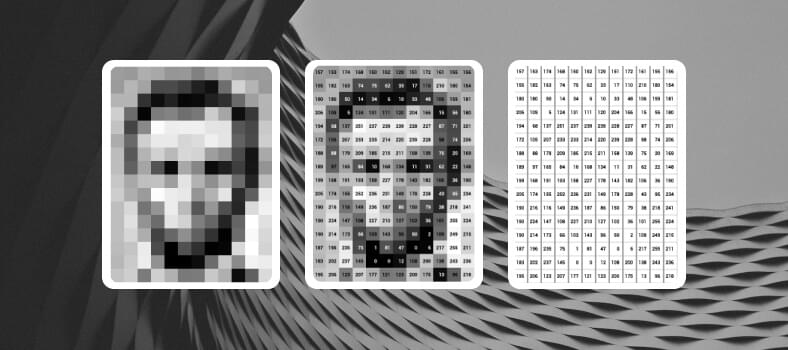
What we see on the left is a set of pixels that together depict Abraham Lincoln. In the middle image, there are different codes for pixel colors from 0 to 255. The right image also depicts Abraham Lincoln but as a set of numbers. This is what a machine eventually “sees”.

All recent advancements in the computer vision niche became possible thanks to deep learning and neural networks. Here are a few words about them as well.
What role does deep learning have in computer vision development?
Modern computer vision would not exist without deep learning algorithms. They are machine learning subsets, also called neural networks, which use specific algorithms for image processing.

Neural networks can recognize possible relations between datasets. They work similarly to the human brain, i.e., they use neurons to process information. Input in a form of raw data passes through the neural network and appears in the output, which is a data prediction or highly educated conclusion about the given dataset.
Applications of Computer Vision in 2024: How Your Business May Change
What stands behind the rapid growth of the computer vision niche? Its high adaptability. CV has found its application in retail, healthcare, transportation, manufacturing, and many other industries. Read on to learn how these industries will continue changing in 2024.
Computer vision in retail

Artificial intelligence applications in retail are limitless, covering, among other things, computer vision algorithms. These are the top use cases for next year:
- Customer tracking. Deep learning models can analyze the visitor footfall at the physical store by processing video recordings and afterward, inform store managers about the time spent by customers at a certain location or in a line. Behavior patterns allow businesses to see their stores with their customer’s eyes and make decisions based on objective data (and not on subjective observations).
Read also: AI applications in the retail industry
- Theft detection. In the same way, algorithms can autonomously notice suspicious activities like loitering or entering forbidden areas.
- Checkout & payment systems. Implementing computer vision use cases in checkout processes can speed up transactions. Systems like Amazon Go use CV to identify products when customers take them off shelves and automatically bill them as they leave the store.
- Product recognition and information. Using image recognition (one of the computer vision applications), customers can scan products to receive detailed information about their price, ingredients, and reviews.

- Inventory management. Computer vision systems can automatically track stock levels, identify when items are running low, and assist in restocking. They can also detect misplaced items on shelves to ensure products are organized as intended.
- In-store navigation & assistance. Finding items can be quite challenging in large retail spaces, but applications of CV software are here to help. Interactive kiosks with computer vision capabilities can guide customers to the products they are looking for.
- Social distancing. By using depth sensors, companies can track customers or employees and mark them with red on the video if the distance between them is too short.
- Personal advertising. Digital signage equipped with computer vision products can tailor advertisements and promotions to the age or gender of passing customers.
Computer vision in manufacturing

CV provides, among other things, the most meticulous quality monitoring and, therefore, improves client satisfaction. But it is not all:
- Quality management. As production processes deal with physical objects, smart cameras help manufacturers monitor product quality at all stages. Real-time object detection becomes extremely accurate, fast, and objective. Note that modern AI vision solutions do not require setting up costly cameras to achieve desired detection results.
- Workplace analytics. This use case refers to employee productivity. Computer vision applications tracks workers’ activities, what resources they spend and in what way, and how workplace modifications impact these metrics. Also, smart vision notifies managers about dangerous actions potentially leading to workplace accidents.
- Defect inspection. Visual check is a routine task for human workers, possibly leading to inattention and, as a result, minor and major errors. Computer vision technology can analyze factory equipment and check if workers wear masks and helmets, which makes CV a powerful security tool.
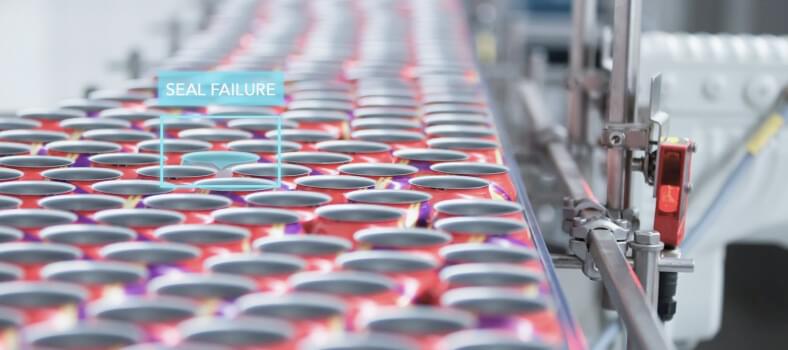
- Predictive maintenance. By monitoring machinery and equipment, machine vision applications can detect early signs of wear or malfunction. This proactive approach helps foresee and schedule maintenance before breakdowns occur, reducing downtime and repair costs.
- Assembly verification. This application of computer vision can verify that each step of the assembly process is completed correctly, including the vital stages of component installation and positioning.
Read also: How AI transforms mobile app development
- Packaging inspection. CV systems check already packaged products for sealing, labeling, and integrity to help you comply with existing standards and be properly prepared for each shipment.
- Robot guidance. In automated manufacturing environments, computer vision guides robots in tasks of welding, painting, or part assembly. It offers precise and efficient automation, especially for complex or repetitive tasks.
Computer vision in transportation
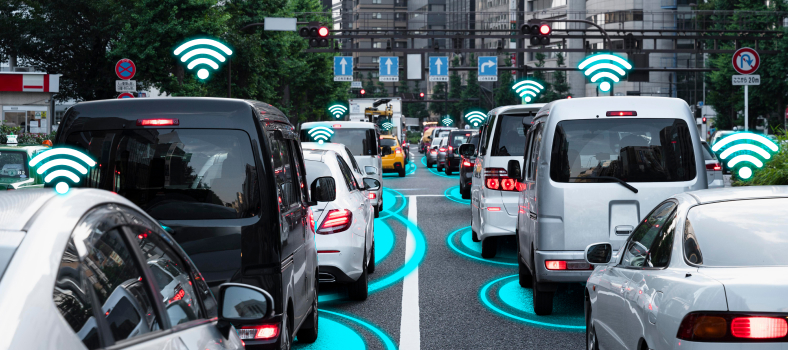
CV solutions offer a variety of opportunities to transportation businesses. The changes may become noticeable in different corners of the world due to roadway safety problems and traffic issues that need to be solved in a short term. What exactly can computer vision techniques provide?
- Autonomous vehicles. This innovation might be the most prominent in the transportation industry. Such vehicles use CV to detect and interpret their surroundings, identify road signs, traffic lights, pedestrians, other vehicles, and road markings to navigate safely. In other words, computer vision technology allows cars to understand the road in a human way.
- Vehicle counting. It is a rather broad term with a long development history. The latest advancements centered around deep learning innovations make large-scale traffic analysis more accessible for businesses and state institutions. Modern CCTV cameras, LiDAR, and thermal imaging devices are now more affordable and provide the highest classification accuracy when used in combination with each other.
Vehicle counting enables real-time traffic monitoring, aggregating traffic data over some period of time, and generating trends. Apart from 24/7 analytics and identifying rush hours, such solutions can detect anomalies, violations, and dangerous actions on the road.
- Road condition assessment. In the same way, using smart cameras, companies and government institutions can monitor the condition of concrete and asphalt roads and direct efforts to damaged or outworn pavement spots. Traditionally, such assessments are conducted by human workers or complex data collection instruments. CV tools are faster and more efficient than human efforts and less expensive than advanced instruments.

- Monitoring driving patterns. Distracted driving behavior results in thousands of casualties on the road. Thus, 3,142 people died in car accidents due to distracted driving in 2020. Given the circumstances, computer vision is a true lifesaver. Cameras installed inside and outside the car analyze the driver’s head position, eyes, gaze, and facial expression to signal if the person is inattentive.
- Pedestrian and traffic sign detection. The use cases of pedestrian and infrastructure detection range from autonomous vehicles to traffic monitoring and regulation enforcement. Traffic signs are recognized with deep learning algorithms, while human identification involves common CCTV, near-infrared (NIR), and thermographic cameras.
Read also: How to implement big data in your logistics business?
- Parking occupancy analytics. This solution can reduce traffic tensions during rush hours by helping numerous drivers find their parking spots in seconds. Computer vision-based tools significantly cut equipment costs compared to more expensive smart sensor options and can be applied to large parking areas.
- Automated License Plate Recognition (ALPR) identifies the vehicle’s registration number with optical character recognition (OCR). ALPR has surged in popularity thanks to its wide application and high-cost efficiency. It is applied during police checks, for smart parking, and in tollbooth management, which potentially makes it a great contributor to public security and transportation optimization.
Computer vision in healthcare
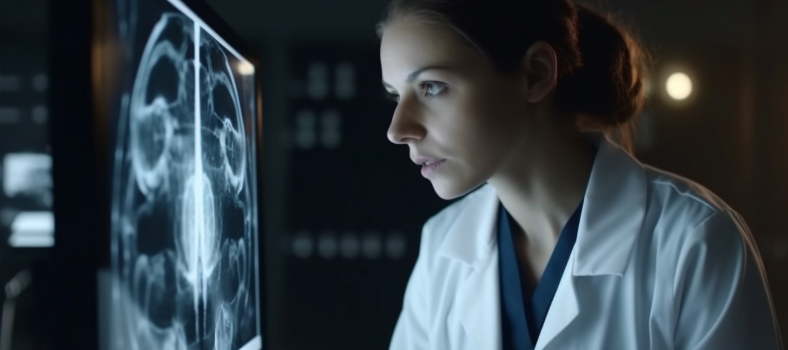
Numerous computer vision applications provide doctors and patients with previously unknown opportunities in medical service. These may refer either to such trivial things as mask-wearing or serious diagnosis use cases, such as cancer detection.
- Patient monitoring. With CV, doctors and nurses can quickly detect falls, make sure patients rest properly, and track changes in the patient’s conditions.
- Rehabilitation. Post-stroke or injury therapy is vital for patients regardless of their age or condition. But the main challenge is to make rehabilitation services more affordable for both patients and hospitals. Computer vision can help. Using CV-based apps, people can practice their training at home, which saves their time and family budget. The doctor’s help is needed at some rehabilitation stages, but consultations can be conducted remotely.
- Diagnosis assistance. It is a rather broad sphere that implies using image recognition techniques to assist medical workers. One of the recent use cases is diagnosing COVID-19 by analyzing the patient’s x-ray. Furthermore, deep learning algorithms help track the illness and capture its progression.
- Cancer and tumor detection. In a similar way, image recognition helps doctors diagnose breast and skin cancer. Algorithms are trained to notice the slightest differences between normal and cancerous cells so they can identify anomalies on MRI scans.
- Pathology and lab diagnostics. Analyzing samples under a microscope, computer vision software can identify disease markers (e.g., cancer cells), more quickly and accurately than manual examination.
- Surgical assistance. CV algorithms can guide surgical instruments, provide real-time imaging, and enhance the precision of surgical procedures. Furthermore, hospitals can use it to train surgeons and plan surgeries.
- Medical training. A combination of augmented reality and computer vision starts a new chapter in medical education. Students get the most realistic and interactive scenarios to improve their skills.
Computer vision in agriculture

The agriculture industry has to deal with a wide range of uncontrolled business risks related to climate and weather conditions. But what companies can control is their day-to-day operations, and computer vision turns out to be an outstanding assistant for that. Let us look at the CV applications in agriculture that are likely to shape 2023.
- Animal and crop monitoring. Day and night monitoring is a tedious but still crucial task in farming. Healthy and well-protected crops and animals directly impact the company’s welfare and financial results. Nevertheless, a lot of issues get overlooked because of the human factor. Smart vision systems help farm workers analyze animal behavior or crop condition in response to environmental changes.
- Farm automation. Automated farming has become a lifeline for agriculture thanks to its easy use and high efficiency. For example, image-based solutions reduce contamination risks by providing precise pesticide spraying. Similarly, CV-based robotics for harvesting and picking significantly reduces operating costs and timeframe.
It is important to note that smart harvesting plays a big part in ensuring product quality. AI vision solutions can analyze plants based on predefined parameters and through that, maximize the product’s market value.

- Drone & satellite imaging. This hardware is becoming popular among farmers worldwide. Imagine how powerful it can become if you add computer vision features. You will get insights into crop health, irrigation needs, and overall field conditions based on large-scale monitoring, and all of it – with no human involvement.
- Irrigation management. Soil is another essential factor to keep in mind when dealing with harvesting. Technologies make the workflow more organized and accurate by, for example, estimating the soil water balance. Sending timely updates to farmers, computer vision contributes to informed decision-making in irrigation management.
- Insect and plant disease detection. Detecting and counting insects manually is one of the most time- and labor-consuming operations, yet, it is highly important for pest control. At this point of our story, you probably realize that image-based technologies cope with this task way better. The same goes for plant disease detection.
Not only do deep learning algorithms identify the disease, but they also estimate its severity. Automating this part of work, agriculturists enhance product security, optimize disease management, and predict yield loss more accurately.
Computer vision in sports
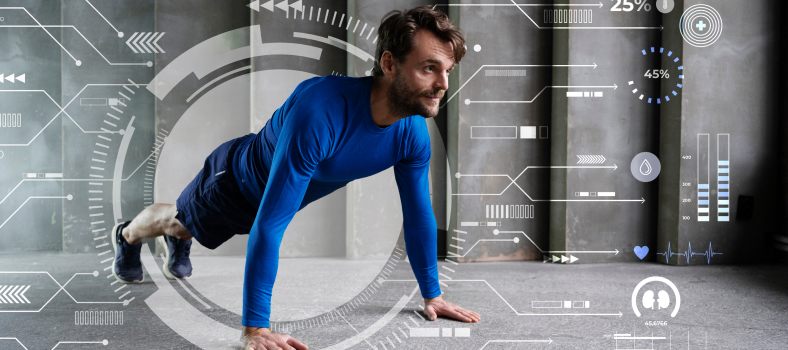
Being human-centered, sports is probably the least expected industry in this article. But it does not mean there is no room for tech innovations. These computer vision business applications may strongly impact the industry in the near term.
- Player pose and movement tracking. Smart cameras can estimate the person’s pose and motion with no special markers or censors on the human body. It is especially important for the sports industry, as athletes in most cases cannot wear additional equipment for quality monitoring.
Also, automated motion estimation enables fast and objective performance assessment of any given athlete or player. Such techniques are already being used in swimming, skiing, golf, cricket, and other activities. In 2023, this trend may spread further.
- Enhanced broadcasting and viewer experience. Computer vision provides automated highlights, 3D replays, and real-time statistics – a true pleasure for sports fans.

- Ball tracking (goal-line technology). This application is similar to motion tracking, but this time, it refers to inanimate objects. The most obvious example is soccer or basketball. Continuously tracking the ball with smart vision, game analytics and sportscasters can provide more detailed and precise game overviews.
In addition, computer vision can potentially become a must-have tool for objective refereeing. For example, CV-powered cameras easily identify if a goal took place and help with efficient decision-making.
Read also: What interactive video is and what benefits it brings: watch the webinar recording
- Video-based coaching. Smart video tracking may become the driving force of efficient coaching. Computer vision technologies provide detailed analytics of an athlete’s progress in a short time, which is particularly beneficial, for example, between competition races. Cameras capture the tiniest flaws invisible to the human eye and allow correcting them as soon as possible.
- Sports equipment design and testing. Analyzing how athletes interact with equipment, CV tools help design better sports gear to achieve required safety and better performance.
Conclusion
These applications of computer vision are only a small tip of a bigger iceberg. Technologies are rapidly changing existing markets, and you can appear among the leaders by quickly adapting to changes.
Computer vision is a key to the previously unseen quality. It provides 24/7 monitoring along with fast, detailed, and accurate insights. To use all these advantages, you need a reliable computer vision development company by your side. A company like CHI Software. Start acting today for the innovative future of your business.

Polina is a curious writer who strongly believes in the power of quality content. She loves telling stories about trending innovations and making them understandable for the reader. Her favorite subjects include AI, AR, VR, IoT, design, and management.
